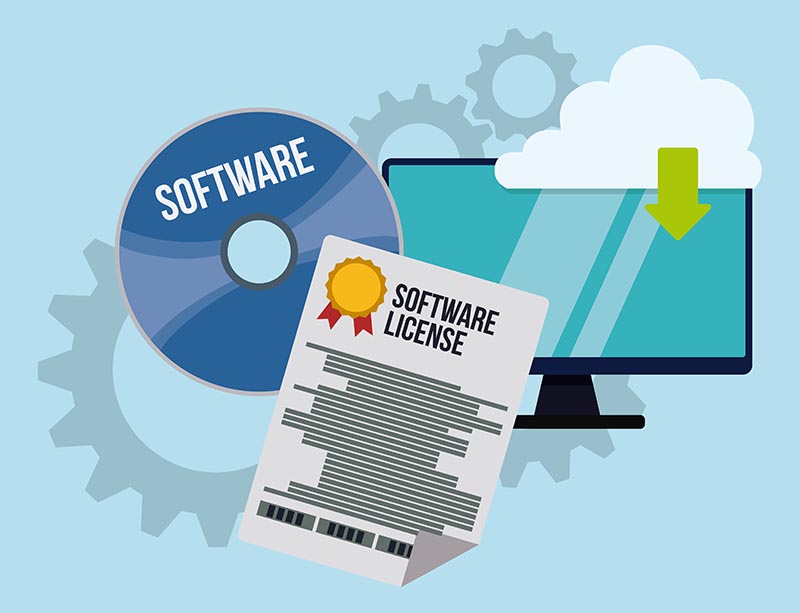Microgaming Slot Replicas with Adjustable RTP: Main Benefits
The online market has a clear demand for analogues of popular slots. Replicas with adjustable return-to-player rates are a practical way to expand a portfolio fast and keep clients engaged with familiar mechanics. Instead of waiting on long production cycles, operators launch proven game patterns and adjust RTP per GEO, season, or campaign goal.
A single title can ship with multiple profiles (for example, 88%, 92%, 96% RTP) and distinct volatility presets. This way, operators can align gameplay feel and payout curve with an individual acquisition funnel in days rather than months.

Buy top-class gambling software from acclaimed content developers at 2WinPower.
What Is a Replica with Adjustable RTP?
In iGaming, slot lookalikes of existing titles are a common occurrence. They may mimic a recognisable theme, layout, features, or maths profile. Slot replicas with adjustable RTP are built on modular engines and can have multiple return rate profiles and volatility presets. The same concept can be adapted to different funnels, traffic sources, and campaign goals without redevelopment.
For operators, the configurable layer turns content into a yield instrument.
They can adapt to a variety of settings:
- hold-to-match acquisition costs;
- segments with distinct variance experiences;
- game’s life cycle;
- configurations across seasons or promotions.
Instead of waiting for new builds, it is possible to adapt one project across geographies and brands, run clean A/B tests on return settings and variance, and stabilise KPIs such as session length, repeat rate, and ARPDAU. In short, replicas with configurable maths let entrepreneurs scale catalogues quickly and keep gameplay fresh with minimal operational overhead.
Technical Features and Customisation

Speed, control, and measurable uplift define slot replicas. Each title presents multiple maths profiles, visual skins, and operational switches. This way, entrepreneurs can align economics and player experience with campaign goals in minutes.
Return Settings
A single build can support multiple payback percentages, which are selectable at deployment or on a scheduled basis. This flexibility enables operators to align margin targets with acquisition costs, seasonality, and geographic factors.
Profiles can rotate by traffic source or event cadence to stabilise LTV. Meanwhile, the gameplay remains familiar. Operators run A/B tests on return settings across brands, record uplift in session length, and capture clear readouts on stickiness before a configuration scale-up.
Variance Presets
Maths frameworks encompass low, medium, and high volatility patterns, which alter hit rate, streak behaviour, and bonus cadence. Low settings favour frequent micro-wins and long sessions, mid-range balances engagement with noticeable peaks, while high presets create pronounced bursts suited to VIP funnels.
Preset change reshapes perceived risk and does not require redesigning features. Operators can adapt experiences by segment (newcomers, bonus hunters, high-value cohorts), and maintain coherent funnels across CRM journeys, all from a single management screen.
Feature Toggles and Bet Economy
Titles expose switches for popular mechanics such as expanding wilds, sticky symbols, re-spin triggers, and feature purchases. Bonus cadence and scatter thresholds sit behind safeguards. This enables controlled adjustments that refresh pacing and do not confuse returning players.
Economy controls cover min/max bet ranges, currency mapping, jackpot contribution, and optional side bets. With these levers, operators can calibrate holds precisely, protect VIP experiences, and orchestrate promotional arcs that feel generous yet predictable at scale.
Integration Footprint
The stack is API-first with lightweight SDKs and clear endpoints for wallet, session, and events. Configuration travels as server-side flags, allowing operators to roll out changes without requiring client updates, keep brand skins consistent, and sync settings across multiple environments.
Analytics connectors stream real-time events into the BI layer, providing rapid readouts on return settings, variance, and feature uptake. That feedback loop shortens iteration cycles, reduces launch friction across markets, and supports rapid expansion.
Microgaming Slot Replicas with Adjustable RTP Settings

Microgaming’s blockbuster titles have inspired numerous lookalike products. These clones mimic the themes, features, and maths of the originals. On top of that, they often allow casino operators to configure different RTP settings.
Most popular Microgaming-inspired slot replicas:
- Asgard by RTG. Norse saga with 243-ways, random wild reels, and a tiered free-spins structure mirrors Thunderstruck II’s progression. Typical RTP is listed around 97.5%, and the feature set (ways wins, wild-reel bursts, multi-stage bonus) is the draw for fans of the original feel.
- Asgard by Pragmatic Play. The 5×3, 25-line take on the same mythos offers god-specific modifiers (mystery stacks, random wilds, expanding wilds) and a guaranteed booster during free spins. The default RTP is 96.48%, and various casino listings confirm the RTP ranges for deployment variants.
- Eternal Love by RTG. This Vampire-based build is a replica of the Immortal Romance mould. 5×3, 243 ways, wild multipliers on reels 2/4, and a distinctive Life Force free spins all indicate the inspiration from the original. User discussions and reviews explicitly link it to Microgaming’s hit.
- Dracula’s Family by Playson. The cartoon-horror rework features a unique multi-mode free-spins format. Punters get to unlock 4 distinct bonus modes over time. This closely echoes the Chamber of Spins titles that fans are well familiar with.
- 9 Pyramids of Fortune by Stakelogic. The Egyptian reskin of the “collect 3–9 scatters for ladder prizes” model was popularised by 9 Masks of Fire. The replica contains various cascade avalanches and a wheel-driven free-spins entry.
Configurable clones compress time-to-value, align economics to traffic costs, and keep gameplay familiarity. This drives session depth, while originals offer prestige but less day-to-day control over margin.
Copies vs non-replica comparison:
| Aspect | Adjustable-RTP clones | Fixed originals |
| Time to launch | One build, multiple profiles configurable per brand or GEO | New maths is often needed for each variant |
| Margin control | An operator selects preset RTP versions where supported | Usually, one RTP and limited room for adjustments |
| Variance tuning | Presets or near-equivalent maths profiles per group | Rebalancing needs a new release |
| A/B testing | Rapid trials on return settings and bonus cadence | Slower loops and fewer economic levers |
| Portfolio scaling | Familiar loops are reused across markets with minimal development | More procurement per campaign concept |
| Promo agility | Feature toggles and themed reskins refresh pacing quickly | Changes tend to be cosmetic, not economic |
| Cost efficiency | High reuse of assets and maths across variants | Higher spend per additional configuration |
Operator Benefits

Configurable copies turn content into a controllable lever. Entrepreneurs align economics, pacing, and perceived risk with campaign goals in minutes rather than months.
Key advantages for operators:
- Return control without rebuilds. Select a payback profile (for example, 88–98%) per brand, community, or season. This way, it is possible to track acquisition costs and promotional intensity instead of forcing a single global setting.
- Faster time-to-value. One engine supports multiple profiles and skins, which compresses roadmaps, speeds launches, and keeps engineering focused on growth tasks.
- Precision testing. Run clean A/B trials on return settings and variance presets to optimise session length, sticky features, and bonus cadence with statistically sound readouts.
- Cohort-specific experiences. Newcomers get frequent micro-wins, bonus hunters feel the pace, and VIPs see pronounced peaks. All this is controlled from a single management screen.
- Longer title life cycle. Rotate configurations across events and geographies, refresh art, and stagger feature toggles to prevent fatigue.
- Promo agility at scale. Schedule profile shifts for holidays, tournaments, or streamer pushes, and pair them with in-game events that lift engagement without unexpected swings.
- Leaner content budgets. High reuse of assets and maths lowers marginal cost per variant, which helps fill lobby gaps quickly and keeps the portfolio balanced across volatility bands.
Integration and Ordering Process

A smooth rollout starts with clear choices and clean configs. Operators are highly advised to adhere to a streamlined flow to get replicas live without detours.
Title Selection
The choice of the right catalogue begins with a clear sense of purpose. If the aim is rapid acquisition, low-variance replicas with frequent micro-wins anchor long sessions and build confidence.
Retention scenarios benefit from mid-range maths that mix steady base-game activity with visible bonus peaks. VIP programmes thrive on high-variance arcs that create memorable bursts without distorting overall margin. A balanced trio across these bands prevents lobby cannibalisation and keeps each campaign focused.
Maths and Presentation Customisation
Once concepts are selected, economics and look need to align with the story operators tell in CRM. Return settings define the financial backbone, while variance presets set tempo and perceived risk.
Skins, audio cues, and on-screen prompts complete the experience. Rules, help menus, and paytables must mirror the chosen configuration. This way, messaging remains consistent from first spin to final cashout.
API and Technical Integration
The delivery is server-driven, which means configuration travels as flags rather than as new binaries. Session control, wallet calls, and round events flow through standard endpoints, while configuration endpoints expose RTP profiles, variance presets, currency rules, and betting limits.
Reporting lands as both real-time streams and daily aggregates. Environments mirror one another to prevent drift. As a result, a setup proven in staging behaves exactly the same when moved to production.
Launch Sequence
A measured rollout produces cleaner data and fewer surprises. Market availability may vary by jurisdiction, so operators are responsible for ensuring local compliance. After clearing out legal nuances, start with a soft release in a single geography under one brand to sample genuine traffic. Observe session length, return rate, hit frequency, and bonus cadence as the first cohorts engage.
When indicators stabilise, extend distribution to additional audiences and introduce higher-impact presets for VIP funnels. Profile rotations tied to holidays, tournaments, or streamer events refresh the experience without expensive rebuilds.
Ongoing Support
Operational calm comes from predictable cycles and transparent ownership. Incidents are routed through a single contact window with clear escalation paths, while cosmetic refreshes are batched into monthly windows to keep art, copy, and hooks up to date.
Quarterly reviews examine whether the chosen maths still achieve margin and engagement objectives, with adjustments scheduled rather than improvised. Version control, change logs, and rollback packages are stored in the release repository, and KPI guardrails raise alerts when payout curves, crash rates, or event streams deviate from the baseline.
FAQ
Is RTP legally adjustable in slot replicas?
Yes. Vendors provide preset RTP versions, and operators select the profile that fits their market policy and business goals.
What certifications do slot replicas require?
Certification is available upon request where a jurisdiction demands it. Otherwise, titles ship with the vendor’s documented maths and change logs for auditability.
How do slot clones compare to originals for payout?
With tuned RTP and variance, replicas deliver comparable session metrics and predictable hold. Outcomes reflect the profile operators choose.
What are the costs and licensing terms?
Commercials are straightforward (setup plus revenue share or flat fee), and no separate brand IP licence is required for these titles.
The Main Things About the Adjustable-RTP Microgaming Replicas
Configurable lookalikes provide operators with fast scaling, fine economic control, and familiar gameplay that converts without lengthy production cycles. With preset RTP profiles and variance presets, one build adapts to multiple communities, geographies, and seasonal campaigns.
Key takeaways about the copy slots:
- A replica with adjustable RTP turns content into a yield instrument, which aligns hold with acquisition costs and promo intensity.
- Variance presets and feature toggles tailor cadence for newcomers, bonus hunters, and VIPs from a single management screen.
- Various examples show how developers mirror proven Microgaming mechanics and offer configurable payout profiles.
- Efficiency improves through shorter time-to-value, longer title life cycles, and leaner content budgets across brands and markets.
If you are ready to expand with configurable replicas, contact 2WinPower to select the right maths, set RTP profiles, and launch a fast, margin-aware portfolio. Order top-class gambling software with adjustable return rates.
- e-mail: info@2wpower.com
- Telegram: @Win2Power
Please be careful! We have noticed that scammers are using our contact details to deceive customers.
For security reasons, please use only the contact information provided on the page https://2wpower.com/en/feedback
Our company is not responsible for the actions of fraudsters.












 DEMO
DEMO 



